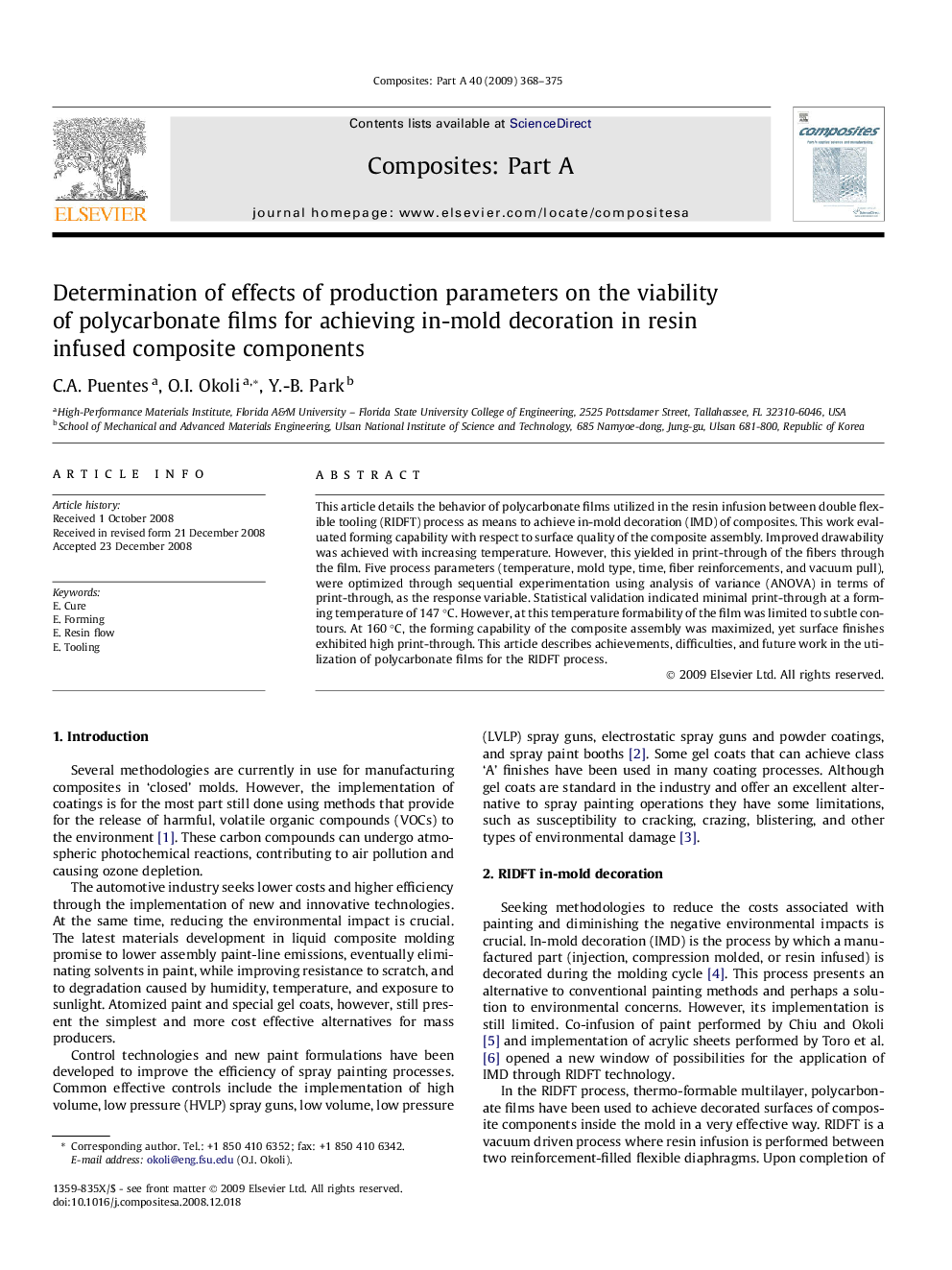| Article ID | Journal | Published Year | Pages | File Type |
|---|---|---|---|---|
| 1467283 | Composites Part A: Applied Science and Manufacturing | 2009 | 8 Pages |
This article details the behavior of polycarbonate films utilized in the resin infusion between double flexible tooling (RIDFT) process as means to achieve in-mold decoration (IMD) of composites. This work evaluated forming capability with respect to surface quality of the composite assembly. Improved drawability was achieved with increasing temperature. However, this yielded in print-through of the fibers through the film. Five process parameters (temperature, mold type, time, fiber reinforcements, and vacuum pull), were optimized through sequential experimentation using analysis of variance (ANOVA) in terms of print-through, as the response variable. Statistical validation indicated minimal print-through at a forming temperature of 147 °C. However, at this temperature formability of the film was limited to subtle contours. At 160 °C, the forming capability of the composite assembly was maximized, yet surface finishes exhibited high print-through. This article describes achievements, difficulties, and future work in the utilization of polycarbonate films for the RIDFT process.
